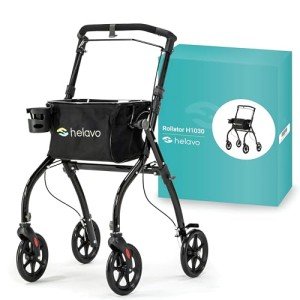The Comprehensive Guide to Indoor Walkers: Benefits, Features, and Recommendations
Indoor walkers, often developed for safety and ease of usage, are invaluable aids for individuals with mobility problems, seniors, or anyone recuperating from surgery or injury. These devices offer stability, support, and self-confidence, enabling users to preserve an active lifestyle within the comfort of their homes. This article explores the various elements of indoor walkers, including their advantages, essential features, aspects to think about when acquiring one, and a comparison of the top-rated models readily available in the market today.
Advantages of Using an Indoor Walker
Indoor walkers use a plethora of advantages, from security to health enhancement. Here are a few of the most significant benefits:
| Benefit | Description |
|---|---|
| Increased Stability | Offers support to avoid falls, making it safer to stroll. |
| Enhanced Mobility | Encourages greater movement throughout the home. |
| Enhanced Confidence | Users feel more secure, minimizing stress and anxiety about moving. |
| Physical Rehabilitation | Help in the recovery procedure for post-surgery clients. |
| Better Posture | Promotes right body positioning while walking. |
| Social Interaction | Permits users to engage more with family and visitors. |
| Adjustable Features | Many models accommodate individualized needs such as height adjustments. |
Key Features of Indoor Walkers
When choosing an indoor walker, it is important to evaluate its features to guarantee it satisfies the user's specific requirements. Here are some features to consider:
- Adjustable Height: Ensures that the walker fits the user's body size for optimum comfort.
- Foldability: Many walkers can be folded for easy storage and transport, making them convenient for those who might travel.
- Weight Capacity: Check the maximum weight the walker can support to ensure usability.
- Design Options: Options may include conventional walkers, rolling walkers with wheels, or specialized designs for included functionality.
- Hand Grips: Ergonomic grips help supply comfort and reduce the danger of slipping.
- Brakes: A reliable braking system is essential for safety when utilizing rolling walkers.
- Additional Accessories: Features like storage baskets or trays can be helpful for bring personal products.
Elements to Consider When Purchasing an Indoor Walker
Choosing the ideal indoor walker can considerably affect the user's mobility and lifestyle. Here are some aspects to remember:
1. User's Condition
- Assess the mobility restrictions or recovery requirements of the user.
2. Kind of Walker
- Identify whether a standard walker or a rolling walker is better suited based on the user's ability to lift the walker or the requirement for mobility as they stroll.
3. Home Environment
- Consider the space in the home where the walker will be utilized. Is there enough room to maneuver through doorways and narrow hallways?
4. Personal Preference
- Aesthetic appeals and color can matter as users may feel more comfortable utilizing a walker that they discover aesthetically appealing.
5. Maintenance
- Think about the upkeep and durability of the walker. Some products need more upkeep than others.
6. Cost Point
- Indoor walkers can vary substantially in cost. Determine a spending plan that meets both quality and affordability.
Top Indoor Walkers: A Comparison
The marketplace features various indoor walkers designed to cater to different needs. Below is a comparative table showcasing a few of the very best indoor walkers presently available.
| Walker Model | Type | Weight Capacity | Adjustable Height | Foldable | Cost Range |
|---|---|---|---|---|---|
| Medline Heavy Duty Walker | Standard Walkers | Up to 400 lbs | Yes | Yes | ₤ 50 - ₤ 70 |
| Drive Medical Rollator | Rolling Walker | Approximately 300 pounds | Yes | Yes | ₤ 70 - ₤ 100 |
| Hugo Mobility Walker | Rolling Walker | As much as 250 lbs | Yes | Yes | ₤ 60 - ₤ 90 |
| Nova Medical Walker | Requirement Walkers | Up to 300 pounds | Yes | Yes | ₤ 85 - ₤ 120 |
| Zler Folding Walker | Standard Walkers | As much as 300 lbs | Yes | Yes | ₤ 40 - ₤ 70 |
Often Asked Questions (FAQ)
1. Do indoor walkers have a weight limitation?
Yes, most indoor walkers have actually a specified weight capacity. It is vital to select a walker that can support the user's weight for safety.
2. Can a walker be used outdoors?
While indoor walkers can in some cases be used outdoors, it's advisable to utilize walkers particularly developed for outdoor usage, which may provide much better stability and balance on unequal surface areas.
3. How do I figure out the appropriate height for my walker?
The proper height for a walker is typically waist-high when the user is standing. Users must be able to keep a natural posture while holding the walker.
4. How do I tidy and maintain my indoor walker?
Regularly clean down the walker with a wet cloth and mild detergent. Inspect the brakes, wheels, and any moving parts to guarantee they are operating properly.
5. How can I enhance my convenience while using a walker?
Consider using grips with additional padding or wearing supportive shoes. It's important to change the height of the walker to prevent pressure on the back and arms.
Indoor walkers act as essential tools for improving mobility, safety, and independence for people with mobility obstacles. With get more info to pick from, it is vital to think about aspects such as the user's specific needs, the home environment, and the walker's features. By picking the ideal indoor walker, users can enhance their quality of life, maintain their self-reliance, and continue taking part in daily activities with confidence.

